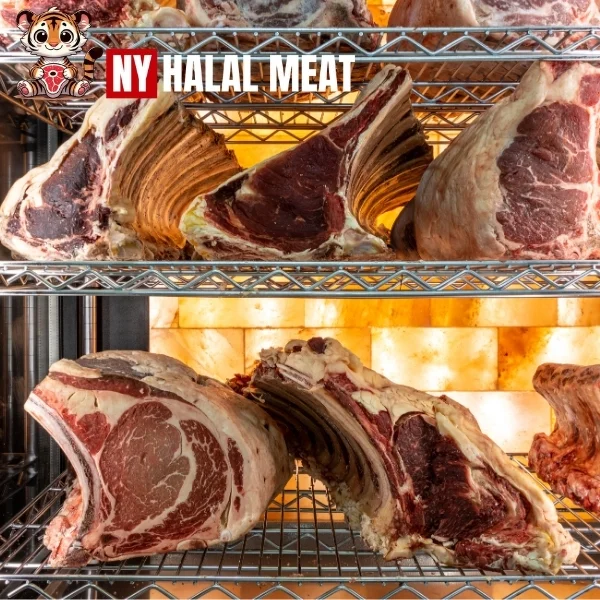Dry Aging vs. Wet Aging: Which Process is Better for Beef?
Marbling and tenderness are enhanced when beef undergoes aging. Both dry aging and wet aging offer unique flavor and texture improvements. Here, we’ll explore each method in detail, helping you decide which option is best suited for your needs.
1. What is Dry Aging?
Dry aging involves storing beef in a humidity- and temperature-controlled environment without plastic wrapping. Typically lasting 14 to 90 days, dry aging occurs at 34-38°F and 85% humidity, allowing natural enzymes to tenderize the meat and enhance its flavor profile.
Flavor Profile
Beef aged through the dry method develops a unique, nutty flavor that’s concentrated and rich.
Texture
Dry-aged beef has an extremely tender, melt-in-your-mouth texture.
Time
This method can take anywhere from 14 to 90 days, with longer times leading to a deeper, more intense flavor.
2. What is Wet Aging?

Wet aging is a method where beef is vacuum-sealed in plastic to retain moisture. Natural enzymes work to break down meat fibers for a milder, tender taste over a shorter aging period.
Flavor Profile
Compared to the bold flavors of dry-aged beef, wet-aged beef has a more neutral, fresher taste.
Texture
Wet-aged beef is tender but lacks the distinct depth of dry-aged cuts.
Time
The process is faster, usually taking 7 to 28 days, and is more cost-effective than dry aging.
3. Key Differences Between Dry Aging and Wet Aging
| Feature | Dry Aging | Wet Aging |
|---|---|---|
| Flavor | Nutty, concentrated, and earthy | Milder, fresher taste |
| Texture | Extremely tender | Tender but less complex |
| Cost | Higher due to weight loss | Lower due to retained moisture |
| Storage Time | 14-90 days | 7-28 days |
4. Pros and Cons of Dry Aging and Wet Aging
Dry Aging: Pros and Cons
- Pros: Richer, more complex flavors; superior tenderness.
- Cons: Higher cost due to weight loss; requires specific storage conditions.
Wet Aging: Pros and Cons
- Pros: Cost-effective and faster process; retains more moisture and weight.
- Cons: Less intense flavor and a simpler texture compared to dry aging.
Conclusion
Choosing between dry aging and wet aging depends on personal preference. Dry aging is ideal for those seeking a bold, concentrated flavor, while wet aging provides tenderness with a fresher taste at a lower cost. Both methods elevate beef quality, so either choice can yield a delicious result.


